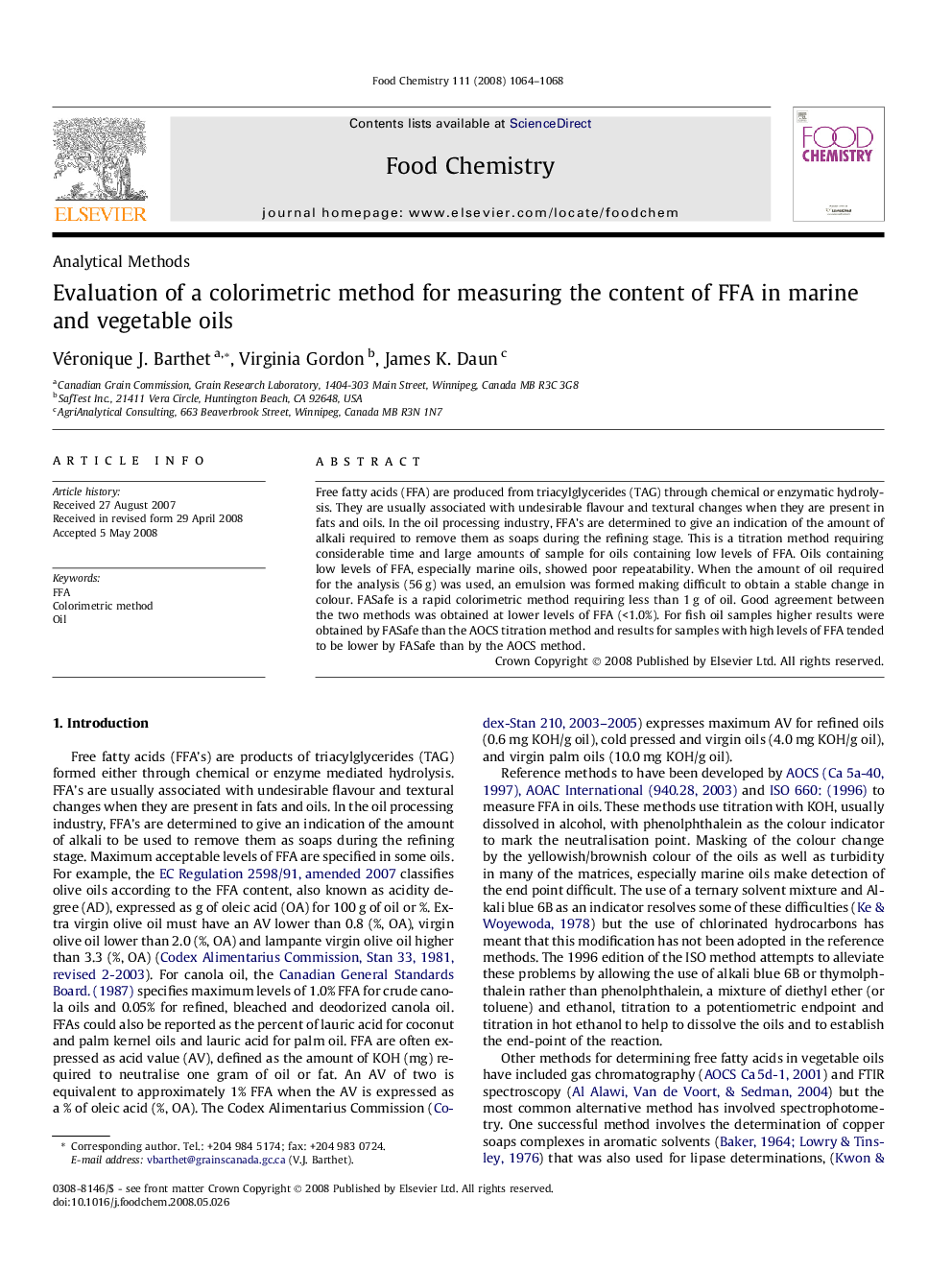| Article ID | Journal | Published Year | Pages | File Type |
|---|---|---|---|---|
| 1187756 | Food Chemistry | 2008 | 5 Pages |
Free fatty acids (FFA) are produced from triacylglycerides (TAG) through chemical or enzymatic hydrolysis. They are usually associated with undesirable flavour and textural changes when they are present in fats and oils. In the oil processing industry, FFA’s are determined to give an indication of the amount of alkali required to remove them as soaps during the refining stage. This is a titration method requiring considerable time and large amounts of sample for oils containing low levels of FFA. Oils containing low levels of FFA, especially marine oils, showed poor repeatability. When the amount of oil required for the analysis (56 g) was used, an emulsion was formed making difficult to obtain a stable change in colour. FASafe is a rapid colorimetric method requiring less than 1 g of oil. Good agreement between the two methods was obtained at lower levels of FFA (<1.0%). For fish oil samples higher results were obtained by FASafe than the AOCS titration method and results for samples with high levels of FFA tended to be lower by FASafe than by the AOCS method.
